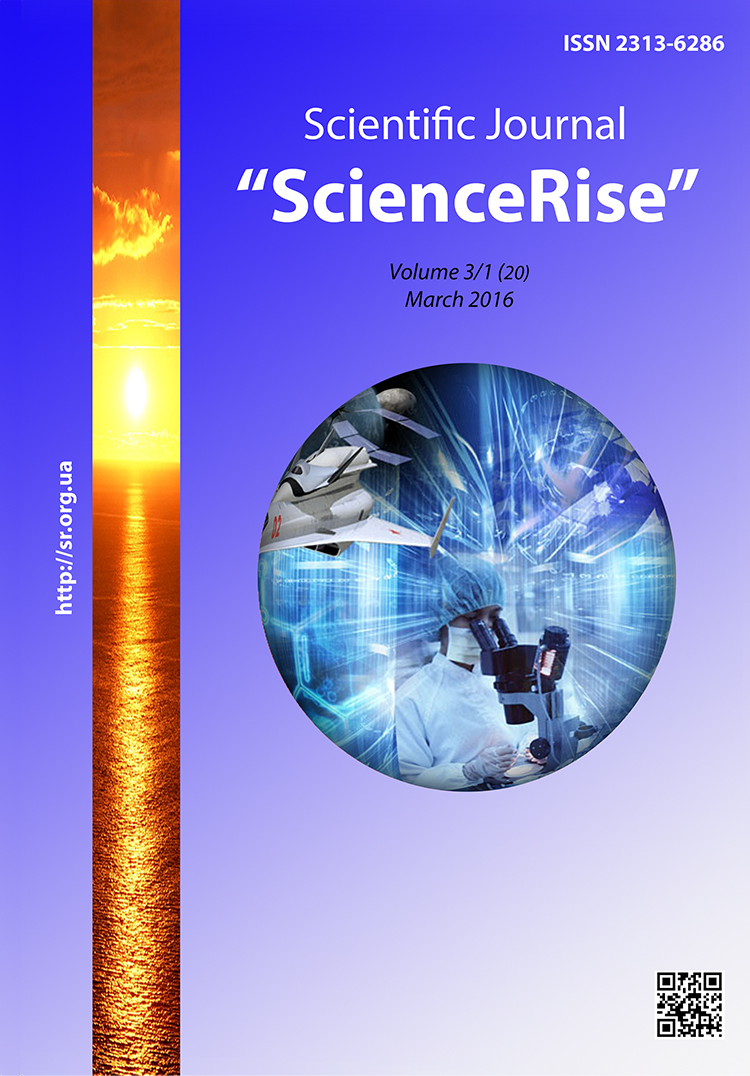Особливості генної регуляції довжини теломер у лімфоцитах периферичної крові людини у ранній та віддалений періоди після опромінення
DOI :
https://doi.org/10.15587/2313-8416.2016.63344Mots-clés :
генна експресія, TERF1, TERF2, TERT, теломери, іонізуюча радіація, Чорнобиль, об’єкт “Укриття”Résumé
Досліджено особливості генної регуляції довжини теломер в імунокомпетентних клітинах людини у ранньому та віддаленому періодах після опромінення. В учасників ліквідації наслідків аварії на ЧАЕС, опромінених в інтервалі доз більше 500 мЗв встановлено скорочення відносної довжини теломер та дисбаланс експресії генів TERF1 та TERF2 на фоні активації р53-опосередкованої теломеразної активності. Ранній період після опромінення у професійних лімітах на об’єкті «Укриття» характеризувався порушеннями протекторної функції теломер лімфоцитів
Références
Blackburn, E. H. (2001). Switching and Signaling at the Telomere. Cell, 106 (6), 661–673. doi: 10.1016/s0092-8674(01)00492-5
Chai, W., Shay, J. W., Wright, W. E. (2005). Human Telomeres Maintain Their Overhang Length at Senescence. Molecular and Cellular Biology, 25 (6), 2158–2168. doi: 10.1128/mcb.25.6.2158-2168.2005
Franco, S. (2005). Effectors of mammalian telomere dysfunction: a comparative transcriptome analysis using mouse models. Carcinogenesis, 26 (9), 1613–1626. doi: 10.1093/carcin/bgi107
Kurz, D. J. (2004). Telomere biology in cardiovascular disease. Cardiovaskular Medicin, 7, 433–442.
LeBel, C. (2005). Telomeres: what’s new at your end? Journal of Cell Science, 118 (13), 2785–2788. doi: 10.1242/jcs.02394
Herbig, U., Sedivy, J. M. (2006). Regulation of growth arrest in senescence: Telomere damage is not the end of the story. Mechanisms of Ageing and Development, 127 (1), 16–24. doi: 10.1016/j.mad.2005.09.002
Blasco, M. A. (2005). Telomeres and human disease: ageing, cancer and beyond. Nature Reviews Genetics, 6 (8), 611–622. doi: 10.1038/nrg1656
Zhou, X. Z., Lu, K. P. (2001). The Pin2/TRF1-Interacting Protein PinX1 Is a Potent Telomerase Inhibitor. Cell, 107 (3), 347–359. doi: 10.1016/s0092-8674(01)00538-4
Moskalev, A. A. (2008). Stareniye i geni [Aging and genes]. Sankt-Peterburg: Nauka, 358.
Collado, M., Blasco, M. A., Serrano, M. (2007). Cellular Senescence in Cancer and Aging. Cell, 130 (2), 223–233. doi: 10.1016/j.cell.2007.07.003
Engelhardt, M., Mackenzie, K., Drullinsky, P. (2000). Telomerase activity and telomere length in acute and chronic leukaemia, pre and post-ex vivo culture. Cancer Res., 1 (60), 610–617.
Deng, Y., Chang, S. (2007). Role of telomeres and telomerase in genomic instability, senescence and cancer. Laboratory Investigation, 87 (11), 1071–1076. doi: 10.1038/labinvest.3700673
Melnikov-Hablo, Е. Е., Telegeev, G. D., Guseva, S. A. (2006). Telomeri i telomerasnaya aktivnost pri zlokachestvennih opuholyah krovi [Teromeres and telomerase activity in malignant tumors of blood]. Ukrainian Journal of Hematology and Blood Transfusion, 3, 5–10.
Egorov, E. E. (2010). Telomeri, telomerase, kancerogenes i mera zdorovya [Telomeres, telomerase, cancerogenesis and health measure]. Cinical oncohematology, 3 (2), 184–197.
Joo, O. H., Hande, M. P., Lansdorp, P. M., Natarajan, A. T. (1998). Induction of telomerase аctivity and chromosome aberrations in human tumour cell lines following X-irradiation. Mutation Research/Fundamental and Molecular Mechanisms of Mutagenesis, 401 (1-2), 121–131. doi: 10.1016/s0027-5107(97)00321-7
Hande, M. P., Lansdorp, P. M., Natarajan, A. T. (1998). Induction of telomerase activity by in vivo X-irradiation of mouse splenocytes and its possible role in chromosome healing. Mutation Research/Fundamental and Molecular Mechanisms of Mutagenesis, 404 (1-2), 205–214. doi: 10.1016/s0027-5107(98)00115-8
Report to the General Assembly, with scientific annexes Volume II: Scientific Annexes C, D and E Annex C: Non-targeted and delayed effects of exposure to ionizing radiation (2006). United Nations Scientific Committee on the Effects of Atomic Radiation (UNSCEAR), 80. Available at: http://www.unscear.org
Zvereva, M. E., Scherbakova, D. M., Doncova, O. A. (2010). Telomerasa: struktura, funkcii i puti regulacii aktivnosti [Telomerase: structure, functions and pathways of regulation activity]. Success of Biological Chemistry, 50, 155–202.
Téléchargements
Publié-e
Numéro
Rubrique
Licence
(c) Tous droits réservés Ірина Миколаївна Ільєнко, Димитрій Анатолійович Базика 2016

Cette œuvre est sous licence Creative Commons Attribution 4.0 International.
Our journal abides by the Creative Commons CC BY copyright rights and permissions for open access journals.
Authors, who are published in this journal, agree to the following conditions:
1. The authors reserve the right to authorship of the work and pass the first publication right of this work to the journal under the terms of a Creative Commons CC BY, which allows others to freely distribute the published research with the obligatory reference to the authors of the original work and the first publication of the work in this journal.
2. The authors have the right to conclude separate supplement agreements that relate to non-exclusive work distribution in the form in which it has been published by the journal (for example, to upload the work to the online storage of the journal or publish it as part of a monograph), provided that the reference to the first publication of the work in this journal is included.

